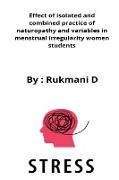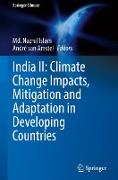Effect of isolated and combined practice of naturopathy and variables in menstrual irregularity women students
BücherAngebote / Angebote:
INTRODUCTION In 1986, the WHO, in the Ottawa Charter for Health Promotion, said that health is "a resource for everyday life, not the objective of living. Health is a positive concept emphasizing social and personal resources, as well as physical capacities". Overall health is achieved through a combination of physical, mental, emotional and social well-being which together is commonly referred to as the health triangle (WHO, 1986). The health status is usually measured in terms of life expectancy at birth, infant mortality rate, fertility rate, crude birth rate and crude death rate. These indicators of health are determined by numerous factors such as per capita income, nutrition, housing, sanitation, safe drinking water, social infrastructure, health and medical care services provided by government, geographical climate, employment status, incidence of poverty and the like (Reddy and Selvaraju 1994, Dadibhavi and Bagalkoti 1994). It is a well-known fact that India is, next only to China, the second largest country in terms of population in the world. But the health status of a great majority of the people is far from satisfactory as compared to China and other developed countries. However, over the last five decades or so, India has built up health infrastructure and manpower at primary, secondary and tertiary care in government, voluntary and private sectors and made considerable progress in improving the health of its population (Ray 2003, Bhat and Babu 2004). However, India is one of the major countries where communicable diseases are still not under control. The incidence of new fatal diseases such as AIDS / HIV,
Folgt in ca. 10 Arbeitstagen




